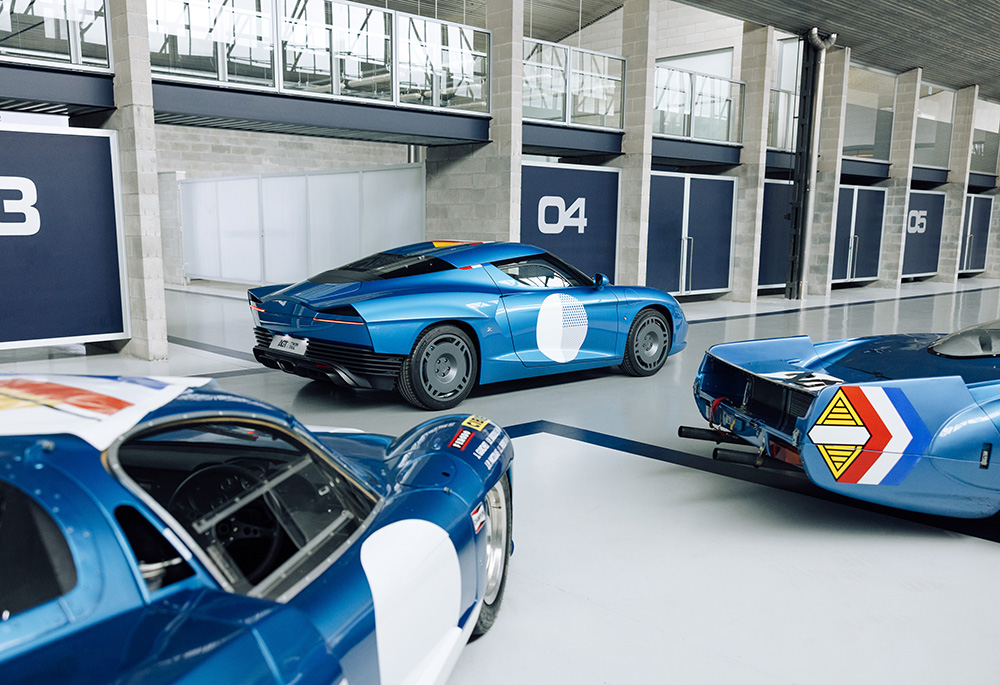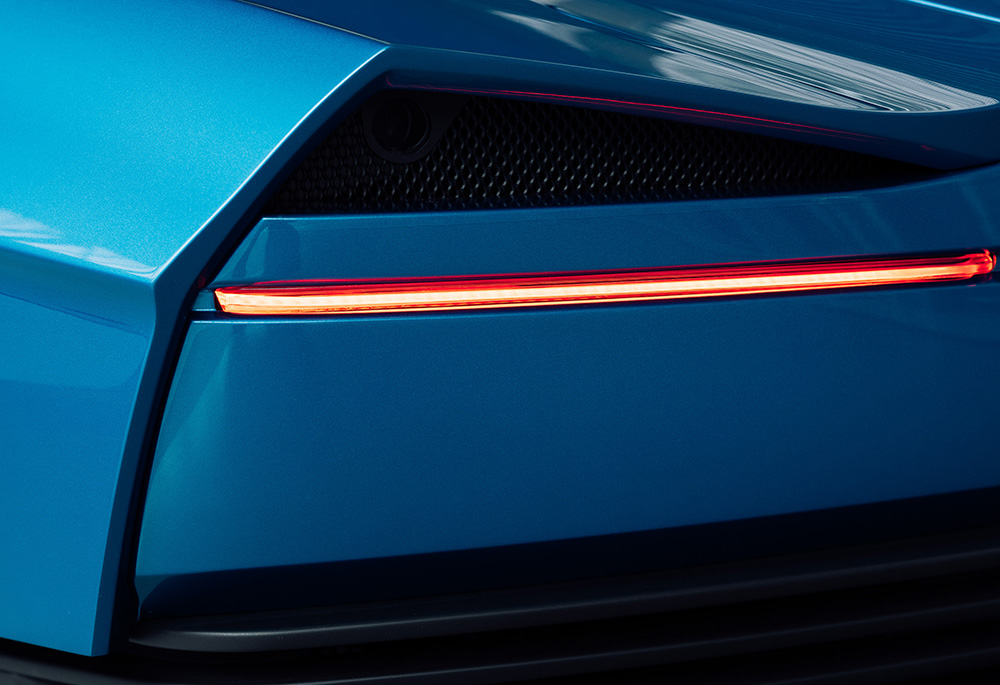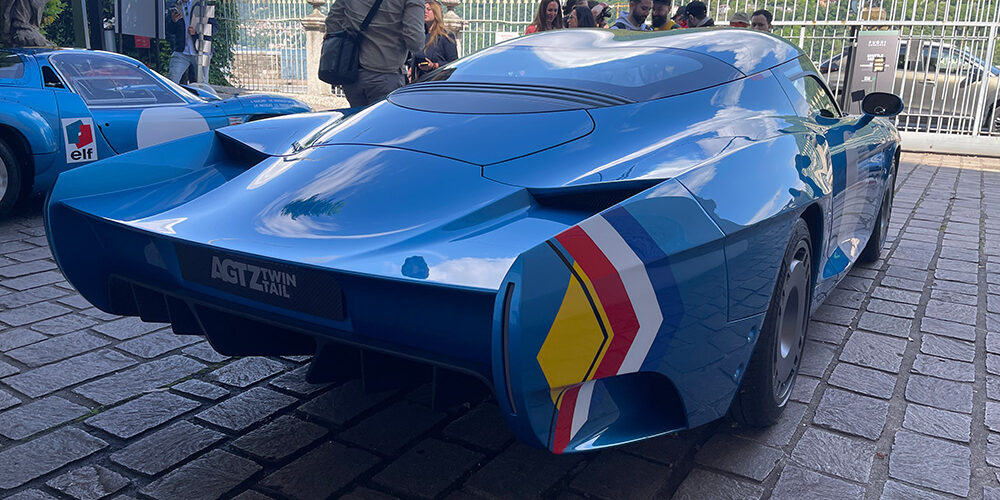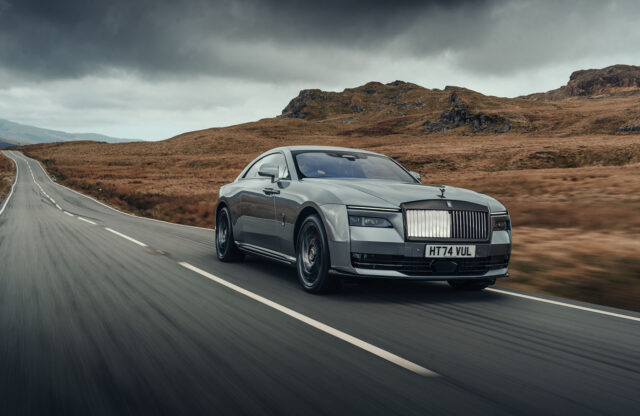One of the most fascinating tales – or, more accurately, tails – to come out of 2024’s coachbuilt car world was February’s announcement of the AGTZ Twin Tail.
Using the Alpine A110 as a base, Zagato has teamed up with Polish supercar distributor La Squadra to build a tribute to two Alpine racing cars with one modern road machine. As explained here in Magneto’s prior coverage, the newcomer has a removable tail section that pays tribute to both the Alpine A220 racing car in long-tail form, and the short-tail A220 with the section removed.
The car had made its public debut at FuoriConcorso over the Concorso Villa d’Este weekend. We spoke to La Squadra founder Jakub Pietrzak and Zagato CEO Andrea Zagato about the project. First things first, however – why Alpine?

For Jakub, the inspiration is simple, and personal. “I grew up in a Renault dealership – my father set up the company in 1992, and was one of the first in Poland after communism collapsed,” he recalls. “I was just spending my holidays helping out my father, but when you live in a Renault dealership, Alpine is legendary. It’s full of crazy history and amazing achievements – the story of a Renault dealer that became a car producer. I went through all the books it was possible to read about Alpine, always dreaming about the A110.”
Jakub was later able to buy an A110 1600, and utterly fell in love with the brand. So when Renault announced it was relaunching the Alpine brand after more than 20 years’ hiatus, expectations were high. “Alpine did an amazing job, creating a car that is an amazing successor,” he says.
By this point, Jakub’s firm – La Squadra – had become a major dealer in brands such as Bugatti, Pagani and Ferrari. “I got more comfortable in the hypercar and luxury car market, and this is where I met Andrea Zagato,” he says. “Zagato is a brand with an amazing history – I didn’t expect to be sitting with Andrea at lunch, talking about the future of coachbuilding and then giving him an idea about this project.”

Renault has invested millions of Euros into the Alpine brand, with endurance and Formula 1 teams, plus a raft of new cars in the pipeline. Despite all this, Jakub felt the public still hadn’t cottoned on to the car’s abilities, prompting him to pose the idea of modern A110 as a donor car.
Suitably enthused, he returned to Poland with a whirlwind of ideas – and then one stuck out. “I remembered the story of the A220 short tail, which had been a long tail,” he smiles. “I think it’s the only racing car in history that’s gone from endurance racing to hillclimbing, and been as successful – so I said, let’s tell this story, a little bit in reverse.”
For Andrea Zagato, it was the allure of trying something new that appealed most about the project. “To make the brand survive 105 years, I definitely concentrated on the collaborations that are pre-existing, such as with Alfa Romeo or Aston Martin – it’s easy to open the door,” he said. “Now that we have consolidated Zagato, I thought maybe we should move into something we have never done; one brand I really like was Alpine.”
Historically, Alpine’s emphasis on small-capacity engines, light weight and streamlined, aerodynamic bodies made the French team a rival to Zagato. However, even for road cars, heading to France for work wasn’t something that Zagato had historically cultivated, unlike Bertone (Citroën) and Pininfarina (Peugeot).
“French brands tend to be far from the design language of Zagato, because when you think about French design it’s Art Deco, Art Nouveau and so on,” Andrea muses. “When you think about Zagato, it’s about aeroplanes, so it’s functionalism.”
Indeed, when Jakub approached Andrea with an idea for collaboration, Alpine wasn’t what he was expecting. “Being a dealer, I was expecting him to propose a Zagato, McLaren or Ferrari. When he said Alpine, I was shocked,” Andrea laughs. The concept of two cars in one car, a long tail and a short tail, didn’t phase him, however. “Short and long tail is the comfort zone for us – I felt comfortable in the conversation. I liked the challenge and the whole gang were very enthusiastic – very young, very bold.”

That boldness caught the attention of Renault boss Luca De Meo. “By chance I got on the phone with Luca – probably one of the best automative managers I’ve ever met,” Andrea says. “He took the time to chat with me, and sent a letter of congratulation, thanking us for doing this job with a lot of passion, telling a nice story about Alpine to the world, which most have forgotten.”

Zagato and La Squadra introduced the project to Alpine staff at Le Mans in 2023, and in less than a year the first car – number 00 – was making its public debut at FuoriConcorso. Now sales of the 19 cars is underway and half have already found homes. However, the project wasn’t without its challenges; transforming the motifs of a tiny, low, 1970s racing car into 2024 road car, with all the safety regulations that entails, involved plenty of thought. “The first challenge was how tall the car was going to be – we kept the car at the beltline, so all the electronics and mechanicals are the same up to beltline,” Andrea says. “We added a roll bar on top to lower the roof, because with the double bubble you can lower the general feeling of the roof.”
The other challenge was getting the lights to successfully pay homage to racing cars, for which road homologation wasn’t even a consideration. “We use the same internal elements of the A110’s lights, but have redesigned the covers with plexiglass, which will be homologated. In the meantime, we tried to lower the nose as much as possible.”

Andrea’s favourite part of the design is the rear lights. “At night when you don’t see the whole car, you can tell if it is long or short because of the lights; one is horizontal and short, the other is long and vertical,” he says. He’s very pleased with the reception to the design. “Nobody has tried to do this before, with the two tails at the same time – the feedback was very positive.”
Jakub is in love with the design, although getting the car right was the most stressful part. “How the final outcome will look, how the proportions fit – at the end, you never know,” he admits. “Moving from the 3D model to the natural product, that was the most stressful thing. However, with any project, when you are focused and have good people onboard, you will manage it, bringing [it] to life in a way you’ve been dreaming about. But it’s definitely hard work.”

He continues: “It’s a project driven by passion, and people from Alpine know our company because we spent 30 years with Renault. I’ve dedicated all my life to Renault, and honestly this project is a tribute to the amazing cars Alpine produced for Le Mans.”
With the first models starting in production in October, how does Jakub feel about the project now? “It’s opened my eyes to how complicated the process of making a car is, and I have 100 times more respect for the likes of Horacio Pagani or Christian von Koenigsegg,” he says.
Would he do it again? The answer is emphatic, but with a warm smile: “No! However, we are working with Zagato to experiment the potential for further projects; for example, we are opening up a new gallery where we’re going to do pop-up exhibitions for niche producers. We did it with Singer and it was super successful; we’re now an official partner. We are also now doing something with Kimera and Zagato.”
To find out more, head here.




